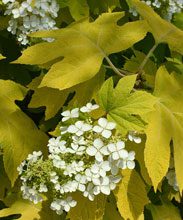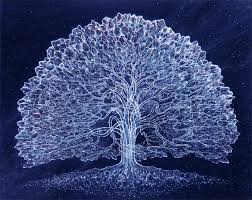Of course not. But if I’d said this was about soil, you’d have metaphorically turned the page already. Isn’t it interesting though, that such a boring thing is the very basis of whether or not you are a successful gardener. Because it all starts with the soil.
And so many names for it are pejorative. Soil and dirt, as nouns, are neutral –neither good nor bad. But as verbs or adverbs, those words – or their variations – mean to sully, demean or stain.
What we are concerned with here is the noun. Soil: the top layer of the earth. Why is the soil in the tropics so different from the soil in the desert? The beaches from the forests?
Soil is a mixture of minerals, dead and living organisms (organic materials), air, and water. The minerals are basically sand, silt and clay, and the major difference between those is the size of the particles. Ideally, soil should contain equal parts of all of them. Sand is for drainage, silt is smaller and can hold small quantities of nutrients, and clay can hold more nutrients than silt. Since sand is only broken down rock, minerals come from which ever kind of rock it started out as.
Not all soil is suitable for growing things. It must have good tilth. Tilth is the condition which allows things to grow. The word derives from tillage; the practice of manually breaking up the soil. Fairly recently, it has been determined that tilling or disking is actually detrimental to the tilth of soil. Soil organisms can be affected, bringing microbial activity to a halt. Soil pores are closed, imposing severe limitations on infiltration and increasing runoff.
Annual tilling is not something that homeowners ordinarily do. In fact, most vegetables grown by homeowners are grown in raised beds. Turning the soil is not tilling.
The newer recommendation for planting trees and shrubs is NOT to amend the backfill soil. I take issue with that because most soil in the Lowcountry, by itself, is mostly sand; it lacks the organic material which gives soil its tilth. I still rely on the old adage: “Dig a ten dollar hole for a five dollar tree.” I am careful to plant the tree or shrub a few inches higher than the soil level since it will no doubt settle down that much when established. And I do amend the backfill soil with organic matter – compost or aged manure.
Many (I would say most) of us don’t have compost piles, so we rely on bagged soil amendments. It’s costly and heavy as the dickens to haul around. Even so, it’s more convenient than tending a compost pile. I often follow Margot Rochester’s practice of taking her kitchen scraps out to the garden and removing a shovel full of soil, dumping the scraps, and covering them up again. Needless to say, those are only coffee grounds, vegetable and fruit scraps. Oh, and egg shells and shrimp peels. They actually do decompose. Eventually. Shrimp peelings are loaded with nitrogen and egg shells are mostly calcium; great soil enrichers.
Now potting soil is a different matter entirely. Some purists have ‘recipes’ for building their own potting soil, not trusting their precious plants to commercial products. I don’t have such rigid standards, but I do buy the best product I can afford. Some of the smaller ‘artisan’ brands say they give the best results, but, gee whiz, who can afford them?
Some of the ‘seed starting” mixtures have no soil at all in them; composed mostly of peat moss, coir (shredded coconut shells), vermiculite or perlite. Most of the peat moss sold in the United States is sustainably harvested from bogs in Canada. The amount of peat moss harvested from Canadian peat bogs every year is nearly 60 times less than the total annual accumulation of new peat moss.
So we don’t have to feel guilty about using it. However, it has its drawbacks. Its first impulse is to repel water, so it’s nigh on impossible to moisten. If you buy it in bales, cut a slit in the plastic covering and hose in as much water as it will hold, and leave it for a week or two before mixing into your garden soil. It’s also very acid (4.4 ph), so if you’re growing vegetables or flowers, you’ll want to add some lime.
A word or two about mulch. I, for one, am glad that the mulch I use decomposes. I don’t mind replacing it every year or two. I’m not fond of pine straw since it’s hard to dig through to plant, and doesn’t decompose as well as bark or wood chips.
Decomposing wood mulch works its way down into the soil due to earthworms and insect activity. It’s a misconception that decomposing wood chips use up the nitrogen in the soil. Yes, it’s true that fresh wood chips use nitrogen to decompose, but that won’t affect the soil beneath it. And some tree companies will deliver a load of chips for free.
Carpenters measure twice, cut once. Painters spend more time prepping the surface than applying paint. Cooks spend more time peeling and dicing than actually at the stove. And so should gardeners pay more attention the soil before actually planting.
Great advice. I should follow it myself!
Gardening Tip: Don’t mow or weed whack your weeds! Pull them and dispose in the trash. They’re loaded with seeds which when left on the ground, will germinate even better than their parents did.









